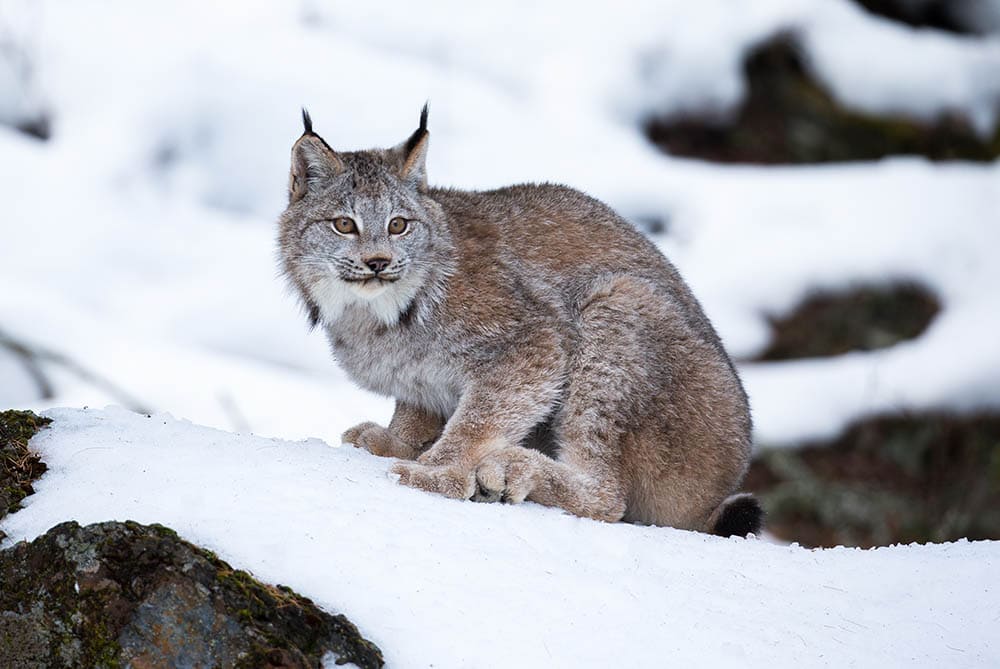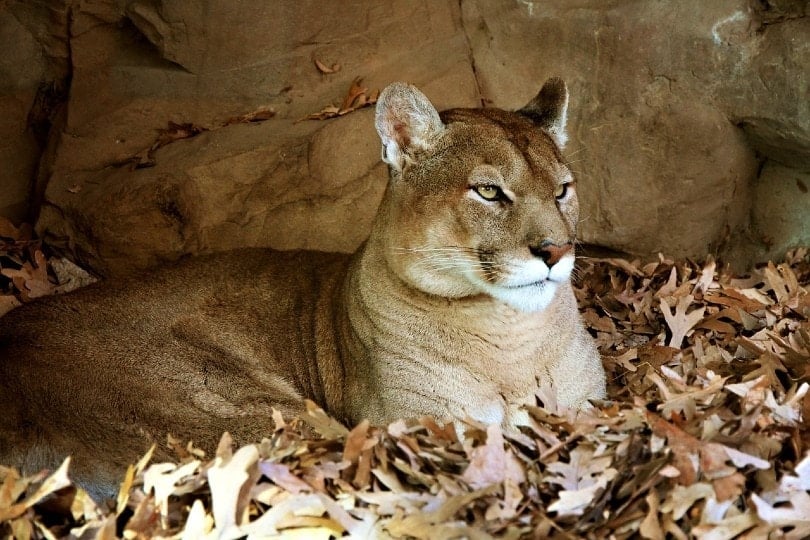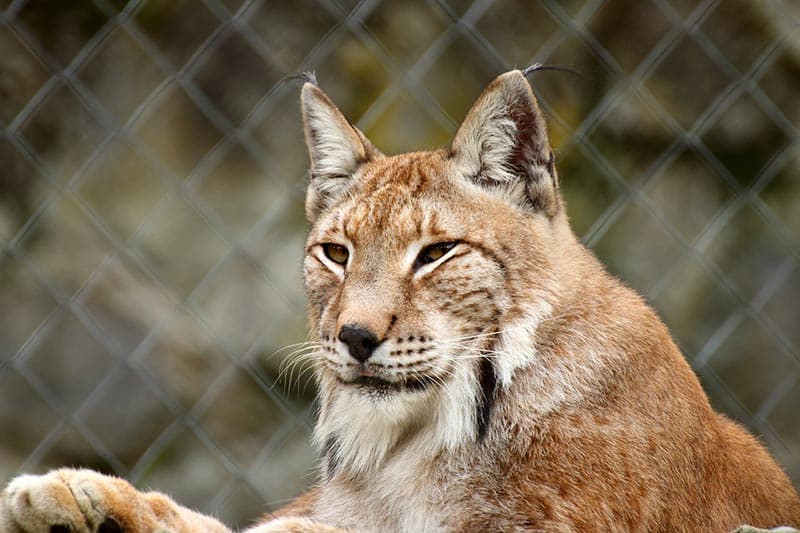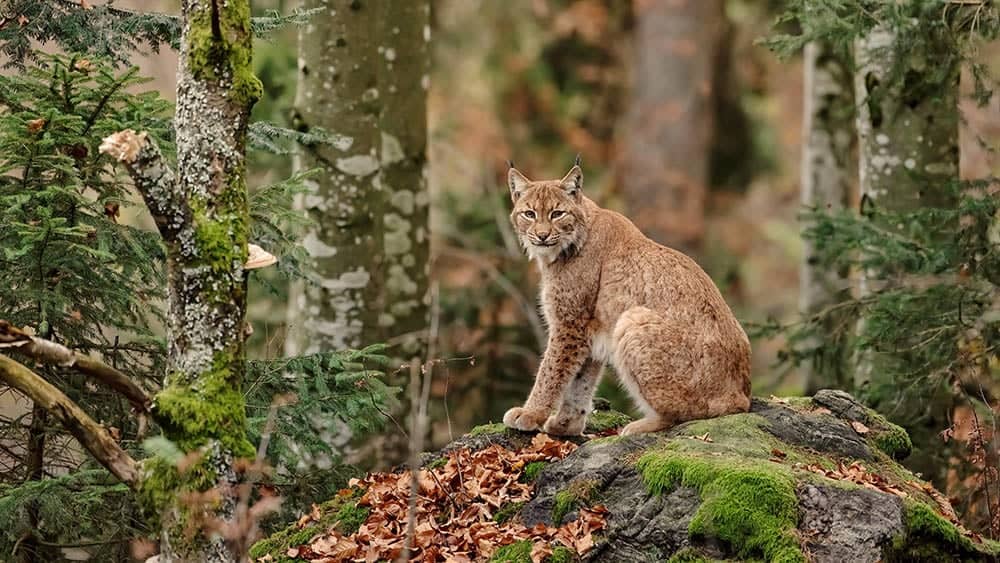With a border along Canada, North Dakota is one of the coldest regions in the United States, and the Great Plains cover a vast portion of the state. North Dakota’s nickname is The Peace Garden State, thanks to a 1932 pledge by the US and Canada never to go to war. In honor of that pledge, the International Peace Garden on the border between ND and Canada was established.
Unfortunately, that peace treaty didn’t extend to the big cats that roam North Dakota, some of which were hunted to extirpation (aka regional extinction). Today, although many types of wild animals live there, only three wild cats live in North Dakota. We’ll take a close look at all three of the big, wild cats below, including how they live, hunt, mate, and more. Read on to discover all you ever wanted to know about the wild cats in North Dakota and learn some fascinating facts about them!

The 3 Types of Wild Cats in North Dakota
1. Canada Lynx

| Habitat: | Boreal forests with moist, snowy winters |
| Diet: | Carnivore |
| Behavior: | Solitary except when breeding |
| Size: | 2 feet long, 18 to 60 pounds |
| Lifespan: | 10 to 14 years |
| Scientific Name: | Lynx canadensis |
| Conservation: | Least concern (LC) |
The Canada Lynx loves living where there’s snow and the forest stays moist most of the year. That makes North Dakota perfect for them, as it’s on the Canada border, gets plenty of snow, and is often damp and wet. Many folks in North Dakota have never seen a Canada Lynx because they are so elusive and stay far away from humans.
Also, unlike many of the so-called “big cats,” the Canada Lynx isn’t much bigger than a small dog or large house cat. That makes spotting it in the wild even more difficult.
What’s intriguing about the Canada Lynx is that, unlike most cats that will eat anything if the opportunity arises, they stick with snowshoe hares (rabbits) almost exclusively.
They den and breed in one part of the forest (subalpine coniferous with mature trees and heavy undergrowth) but hunt in another part (younger forests with wide open spaces). An adult Canada Lynx will kill a snowshoe hare every 2 or 3 days and slightly more frequently if she has kittens.
The two species are so intertwined that if the snowshoe hare population decreases, the Canada Lynx population also decreases, and vice versa. These wild cats hunt alone mostly at night and can see extremely well in the dark. How well? It’s estimated that they can see their prey from 250 feet away at night, nearly the length of a playing field!
2. Mountain Lion

| Habitat: | Mountainous, rocky canyons, deserts, coastal forests |
| Diet: | Carnivore |
| Behavior: | |
| Size: | 115 to 220 pounds |
| Lifespan: | 8 to 13 years |
| Scientific Name: | Puma concolor |
| Conservation: | Least concern (LC) |
The Mountain Lion is known by several names in North Dakota, including the puma, cougar, and panther. The big wild cat is known by over 40 names, and if you hear someone referring to a big cat in North Dakota you’ve never heard of, it’s likely to be a mountain lion. The mountain lion has a vast range of habitats bigger than any other mammal found in North America. They live in dense forests, mountains, wetlands, and even deserts, although they mostly stick to the woods and Missouri River breaks in North Dakota.
Mountain Lions are very solitary animals and hunt alone. They’re territorial and need a large area to call their own. Mountain lions need 13 times more space to hunt than a black bear and 40 times more than a bobcat! Mountain lions mostly hunt at night and have incredibly sharp vision.
They usually wait for prey to approach before pouncing on it, much like a house cat. Amazingly, mountain lions are big and strong enough to take down a deer, although they will eat a wide variety of other animals if they get the opportunity. Although today the mountain lion is considered the least concern (LC) by conservation organizations, trappers and hunters once hunted them aggressively and almost to the point of complete extinction.
3. Bobcat

| Habitat: | Various forests, coastal swampland, scrubland |
| Diet: | Carnivore |
| Behavior: | Solitary except when breeding |
| Size: | 1.5 feet long, 13 to 35 pounds |
| Lifespan: | 10 to 12 years |
| Scientific Name: | Lynx Rufus |
| Conservation: | Least concern (LC) |
About twice as big as a house cat, the bobcat is also known in North Dakota as the wildcat. Like the other wild cats on today’s list, the bobcat is a solitary animal that hunts and lives alone most of the time. Like the other two wild cats, they typically hunt at night and have incredible eyesight. A mother bobcat will have between one and six kittens and raise them herself. Bobcat young stay with their mom from 9 to about 12 months, give or take a few days. During that time, the mother teaches them everything they need to know to survive.
When hunting, bobcats follow the same route every night, usually traveling from 2 to 7 miles round-trip. Although they aren’t big cats by any stretch of the imagination, bobcats are incredibly strong and agile and can kill prey that weighs as much as eight times their own weight!
Like their cousin, the mountain lion, bobcats wait silently and patiently until prey happens to stroll by, at which time they pounce. Since bobcat kittens are so small, they’ve been known to be “adopted” by house cats. However, it’s challenging for them to live among humans because of their nomadic nature and need to be alone.

What Other Large Predators Live in North Dakota?
Several large predator and carnivorous animals live in North Dakota besides the three wild cats we’ve seen today. Some live in the rocky badlands, where there is very little water and extreme temperatures day and night. There is also very little vegetation, which means carnivores must be able to hunt very well to survive. North Dakota only has a small section of badlands as most of the state is plains and prairie.
Several large predators also live in the 450,000 acres of forests in North Dakota, mainly in the Killdeer and Turtle Mountains, the Pembina Hills, and the Devils Lake area. There’s much more to eat and drink, making it a considerably better site to hunt and survive.
- American marten (Martes americana)
- Badgers (Taxidea taxus)
- Black bears (Ursus americanus)
- Black-footed ferrets (Mustela nigripes)
- Coyotes (Canis latrans)
- Gray fox (Urocyon cinereoargenteus)
- Gray wolf (Canis lupus)
- Long-tailed weasels (Mustela frenata)
- Minx (Mustela vision)
- Raccoon (Procyon lotor)
- Red fox (Vulpes vulpes)
- Swift fox (Vulpes velox)
What Is the Most Common Wild Cat in North America?
One of the three wild cats on our list happens to be the most common wild cat in North America, the bobcat! It is estimated that there are between 2.3 and 3.5 million bobcats in the United States, with another 1.5 million in Canada and northern Mexico.
Do Any Wild Cats Live in Fargo, North Dakota?
All three of the wild cats we’ve looked at today live near Fargo, the capital of North Dakota, but it’s incredibly rare to see one in the city limits. There have been sightings occasionally over the years, but since all three cats are solitary and like being alone, coming close to human civilization isn’t something they often do.
This behavior might change as their habitat continues to shrink, but as of now, the only wild cats in Fargo are feral house cats. Like most large cities, there are plenty of those around Fargo!

Does North Dakota Allow the Hunting of Wild Cats?
Unfortunately, the three wild cat species we’ve seen today are open game in North Dakota. That means anyone with the correct license can hunt or trap them. Bobcats are the most at risk because their pelts are still used to make furs, especially in foreign markets. They are also killed because they are perceived as a livestock threat, although the bobcat’s threat to farmers and ranchers is low.

Final Thoughts
What did you think of the three wild cats that live in North Dakota? Are you keen on spotting one in the wild or avoiding one when exploring, hiking, biking, and camping? Whatever your reason for getting more info on these incredible felines, we hope the information we’ve presented today answers all of your questions.
The good news is that even though there are only three wild cat species in the state, all three have stable populations that aren’t in danger of collapsing any time soon. By the way, if you want to see big cats and other wild creatures the easy way, you can always visit the Red River Zoo in Fargo!
Featured Image Credit: Unexpected_Images, Shutterstock
